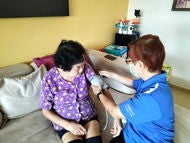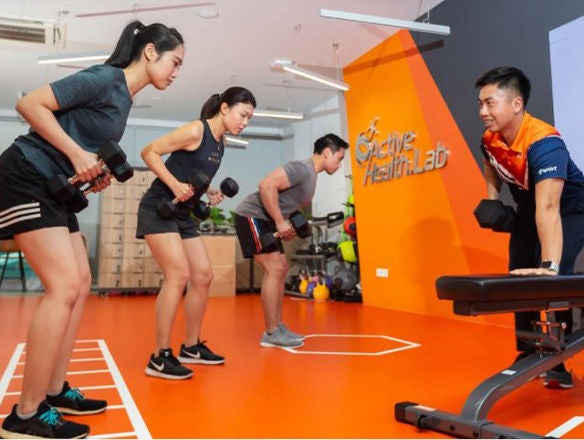
Onco-plastic breast surgery combines cancer resection with established plastic surgery techniques to reshape or remodel the breast for an aesthetic final outcome.
It is a philosophy that considers how the breast form may be maintained, or even improved, while being uncompromising in cancer resection. The range of techniques available allow for a surgical solution that affords optimal oncologic resection whilst considering the breast form that the woman needs to live with for the rest of her life.
Being considerate of the aesthetics of the breast we leave our patients with is particularly important today, as advances in breast cancer therapies now afford excellent long-term survival. Survival for patients with early-stage breast cancers exceeds 90% at 10 years.
Breast-conserving surgery (BCS) removes the cancer with a rim of surrounding breast tissue. It provides equivalent survival to a mastectomy so long that resection margins are cancer-free, and radiation therapy is administered to the remaining intact breast.
It has advantages to a mastectomy as it allows the woman to retain her breast – a breast that is warm, soft and sensate; a breast that fits in her bra and moves and feels as a part of her body. It also allows for less radical surgery, thereby minimising surgical trauma and morbidity.
However, simply removing the cancer from the breast may well leave a patient with significant breast deformities (Figure 1). Loss of breast contour, puckered scars and deviations of the nipple are all potential consequences. These deformities arise because the volume of resection leaves a surgical cavity that collapses and pulls the parenchyma and skin towards the oncological cavity as the patient heals.

The severity of deformity depends on the location of the cancer within the breast, the volume of resection needed relative to the existing breast volume, and the surgical incision of choice. Tumours at the inferior and medial aspects of the breast are prone to deformities, and resection volumes exceeding 15-20% of breast volume often result in poor cosmetic outcomes.
ONCOPLASTIC BREASTCONSERVING SURGERY (OBCS)
Oncoplastic breast-conserving surgery (OBCS) aims to achieve good aesthetic outcomes for women with breast cancers who would have unacceptable outcomes with other BCS techniques. Many of these patients would have otherwise been recommended a mastectomy or be relegated to live with a permanently deformed breast.
An oncoplastic procedure aims to minimise cosmetic detriment to the breast by eliminating surgical cavities that will then create distortion, hence, the terms parenchymal displacement (redistribution) or parenchymal replacement have been used.
1. Therapeutic Mammoplasty / Therapeutic Mastopexy
Breast reshaping by displacement and redistribution of breast parenchyma that remains after cancer resection is possible for patients with generous breasts and adequate remnant parenchyma.
In such instances, breast cancer removal may be combined with a breast reduction or breast-lift procedure, consequently referred to as a ‘therapeutic mammoplasty’ or ‘therapeutic mastopexy’ respectively.
These procedures need to be carefully planned and performed by surgeons trained in such techniques as careful attention to factors such as cancer location, consistency of the breast, vascularity of breast parenchyma, nipple and skin envelope and breast reshaping is critical to ensure an optimal final outcome.
The exact scar upon the breast depends largely on the cancer, the current breast size, degree of breast ptosis (droop) and the volume of reduction planned. Scars may range from being solely circumareolar (around the areolar edge) to those similar to a standard breast reduction like the vertical or Wise pattern type scars (Figure 2a).

Therapeutic mammoplasty (or mastopexy) combines cancer removal with a breast reduction (or up-lift). The resultant scar upon the breast depends on the amount of excess skin and breast parenchyma volume that need to be removed, and the distance of nipple transposition required.
The most common scars usually leave the patient with a scar at the areolar edge (top), a ‘lollipop’ scar (middle), or one that is shaped like an ‘anchor’ (bottom). The horizontal limbs of the latter are typically well-hidden beneath the breast.
The volume of breast reduction largely depends on the patient’s preference. It may be a small volume, where essentially the only breast volume reduction is the wide local excision itself; or significant volume breast reduction akin to those performed for macromastia (severe breast hypertrophy).
For patients with macromastia and large ptotic breasts, a breast reduction at the time of cancer resection has the added benefits of easing back, neck or shoulder pains, and minimising discomfort while exercising. A reduced breast volume also reduces the likelihood of heterogeneous irradiation and burns during adjuvant radiation therapy. Considerable cosmetic improvement to the breast may also be achieved.
The aim of a therapeutic mammoplasty or mastopexy is to create a breast with natural shape and contour, albeit of smaller size, after cancer resection. A similar reduction procedure to the opposite breast may be performed if there had been significant volume reduction during cancer resection and the patient wishes for better symmetry (Figure 2b).
In this example, the cancer in the right breast is removed with additional breast tissue from the lower part of the breast. The nipple is repositioned higher, and the breast is reshaped to create an uplifted, smaller breast of normal shape.
The breast on the opposite side (left) undergoes a breast-lift surgery for better symmetry. Such surgery to the opposite breast is optional, and largely depends on the volume of tissue removed during the cancer resection.
2. Partial Breast Reconstruction
For patients with non-ptotic and modest-
sized breasts, parenchyma redistribution
options are limited. Very often
the volume of resection, even for small
cancers, results in significant breast
deformities because it constitutes a
large proportion of the existing breast
volume.
Partial breast reconstruction is then of particular benefit. Such surgery replaces the volume of breast parenchyma resected for oncologic clearance with tissue similar in consistency to the breast, such as the soft, fatty tissue from the side of the chest wall or from beneath the breast.
Lateral intercostal artery perforator (LICAP) flaps use skin and fat from the side of the breast, near the axilla, to fill breast defects following breast-conserving surgery. They are ideal for cancers that occur in the lateral aspect of the breast, effectively replacing breast volume, maintaining breast contour, and minimising displacement of the nipple areolar complex. These flaps are supplied by the small, named perforator vessels, and do not incorporate any muscle, thereby keeping donor site morbidity to a minimum.
Typically, breast cancer resection, axillary staging and harvest of the flap will all proceed through the one scar along the lateral chest wall. The scar may be long, but is seldom visible from the front (Figure 3).

Breast cancer surgery removes the cancer with a rim of normal breast tissue.
In instances where the cancer is large, the resultant space will collapse and pull the breast parenchyma and skin towards the cavity, causing an indentation, loss of breast contour, and deviation of the nipple.
Such deformities are minimised when fatty tissue next to the breast is moved into the breast to fill the 3-D space created from cancer resection. This illustrates a LICAP flap that is flipped to the fill the oncologic cavity.
Partial breast reconstruction is ideal for cancers located in the lateral or inferior parts of the breast.

Anterior intercostal artery perforator (AICAP) flaps employ a similar concept. These crescent-shaped flaps comprising skin and fat are harvested from beneath the breast. Supplied by the AICAP vessels, these flaps are transposed superiorly to fill a breast defect that results from removing a cancer in the inferior pole of the breast.
The scar is well-hidden along the inframammary fold, and by filling the resection cavity with fat, such partial breast reconstruction circumvents the ‘beaked’ deformity that commonly occurs after resection of a cancer in the inferior part of the breast.
3. Fat Grafting
While all efforts should be made to minimise
breast deformities associated with
BCS, breast deformities may still occur.
Secondary reconstruction is possible for
patients who had prior breast-conserving
surgery and resultant deformities. These
may take the form of a formal partial
breast reconstruction, where volume and
skin may be replaced; or a less invasive
approach associated with less scarring –
fat grafting.
Fat grafting, also known as lipomodelling or autologous fat transfer, has been shown to be safe and effective for patients who develop breast deformities after breast cancer resection and breast irradiation. Fat grafting adds volume, mitigates bad scarring, and improves the physical discomfort of a scarred and distorted breast.
In this procedure, fat is aspirated from the patient’s abdominal wall, thighs or buttocks via small 4-5 mm incisions using cannulas. The fat is then processed before being injected into the breast to improve contour and volume. Tight scars are released during this procedure, often providing relief to pulling pains the patient experiences.
CONCLUSION
Today, our patients with breast cancer are living longer than ever, and living well longer is what we aspire for our patients. To be able to preserve the breast affords much comfort and benefits to our patients, and preserving it aesthetically, not simply oncologically, improves their quality of life and rightly parallels advances in breast cancer survival.
Oncoplastic techniques extend the option of breast conservation to those who might otherwise be recommended a mastectomy, such as those with large cancer to breast volume ratios, and patients with cancers in sensitive locations of the breast prone to significant breast deformities.
For other patients, combining a breast reduction with cancer resection may address several issues at the same instance. The variety of techniques available for breast cancer surgery now allows for tailored, individualised surgical treatment for each patient diagnosed with breast cancer.
GPs can call for appointments through the GP Appointment Hotlines:
63214402 (SGH)
64368288 (NCCS)
62944050 (KKH)
By: Dr Veronique Tan, Consultant, SingHealth Duke-NUS Breast Centre
Dr Veronique Tan is a Consultant Oncoplastic Breast Surgeon at the National Cancer Centre Singapore (NCCS) and Singapore General Hospital (SGH). Dr Tan’s practice covers benign breast conditions, the diagnosis and surgical treatment of symptomatic and screen-detected breast cancer, oncoplastic breast surgery and breast reconstruction. She is one of the few breast surgeons in Singapore formally trained in this discipline where breast cancer surgery is combined with plastic surgical techniques to ensure a good aesthetic outcome.
Active in research and education, Dr Tan holds a Master of Science for her research in cancer biology and teaches undergraduate and postgraduate students from the Yong Loo Lin and Duke-NUS medical schools. She has published several scientific papers in peer-reviewed journals on breast diseases and surgical techniques, and has been invited to present her work at numerous local and international meetings.




















